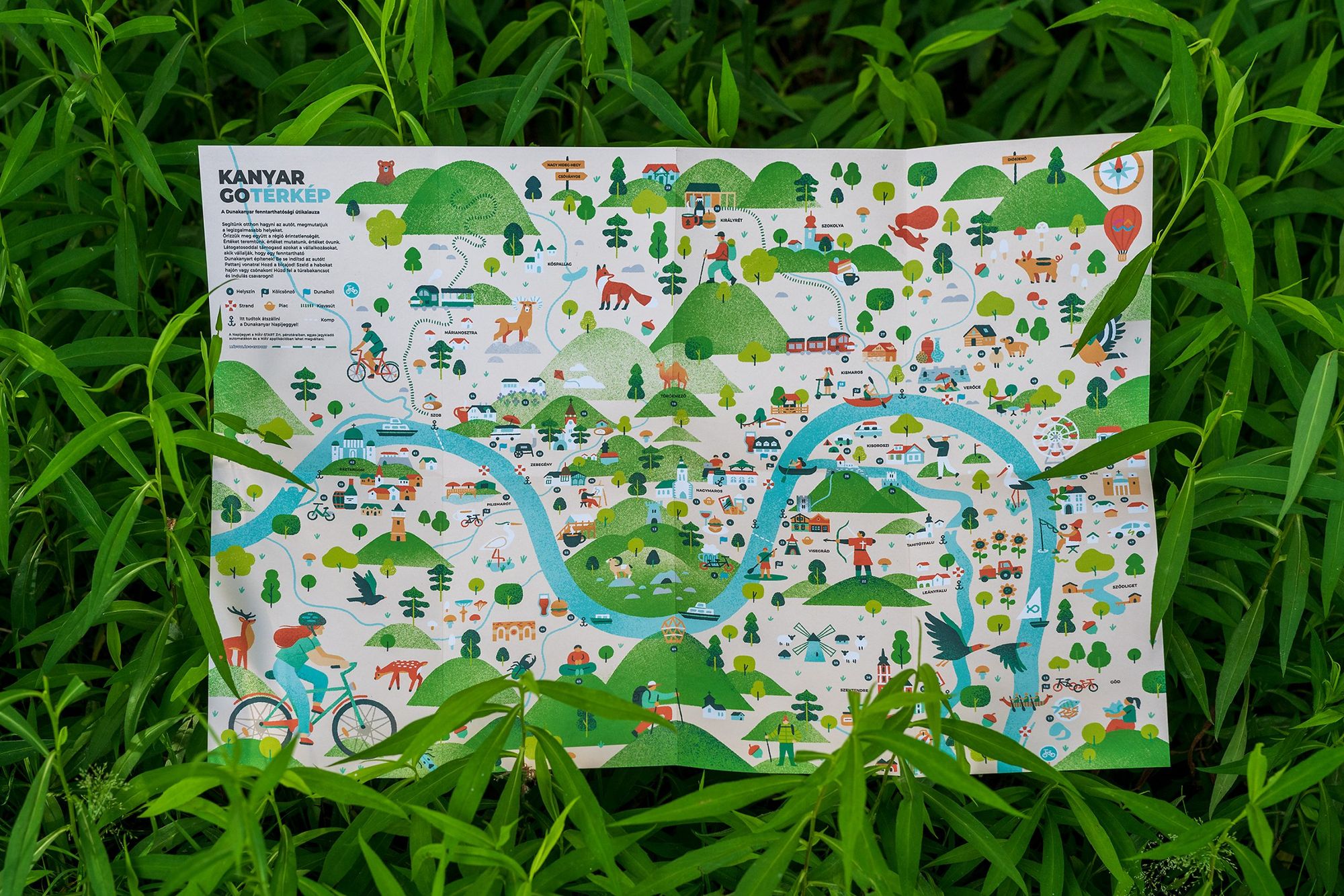”Indulj el egy úton, én is egy másikon” (”You go down one road, I’ll go down another”—free translation): a nice earworm. Several generations are already humming the folk song performed by the Muzsikás Ensemble, familiar from the theme song of the documentary ”Másfélmillió lépés Magyarországon”. But what if we started on one road instead? And that road would be sustainable.
A multi-disciplinary group has been organized around the idea of conscious development of the Danube Bend region to promote people- and environment-oriented tourism on the basis of shared values. URBANUM aims to launch a professional debate on transportation, sustainability, and gentrification while taking into account the urban and cultural character of the region. The latest in our series of articles focuses on the first sustainability map of the Danube Bend, the KanyarGO project, and the ideas that inspired it.
The Danube Bend region is about to explode. More and more people are falling in love with the area. Why are people discovering this region just now? A region which is only fifty minutes far from Budapest and where you can find practically everything. Natural wonders, beautiful views, a growing number of honest service providers, and plenty of activities. Is it the pandemic? Or is it the rise in property prices in Budapest?

”Aki minket meglát, mit fog az gondolni?” (”What will the one who sees us say?”—free translation)
Well, if the person is a local and we are newcomers or visitors, we might be told ”gyüttmentek”, that is, blow-ins everywhere (a Hungarian word often used in some regions to distinguish indigenous people from later settlers). But it is clear that there are more and more blow-ins, as today new aspects determine where we settle and where we imagine our lives to be. We want to live closer to nature and in harmony with nature.
You cannot help but fall in love with the Danube Bend. If you have ever walked along the built-up shore in Verőce, in the shadow of Visegrád Castle in Nagymaros, or in the sunset lights of Zebegény, you will surely return. Those who return will soon find themselves on a real estate site, looking at holiday homes and calculating the time and money required for commuting. More specifically, the population of the region has grown by ten to twenty percent in the last few years alone and this trend is only expected to continue.
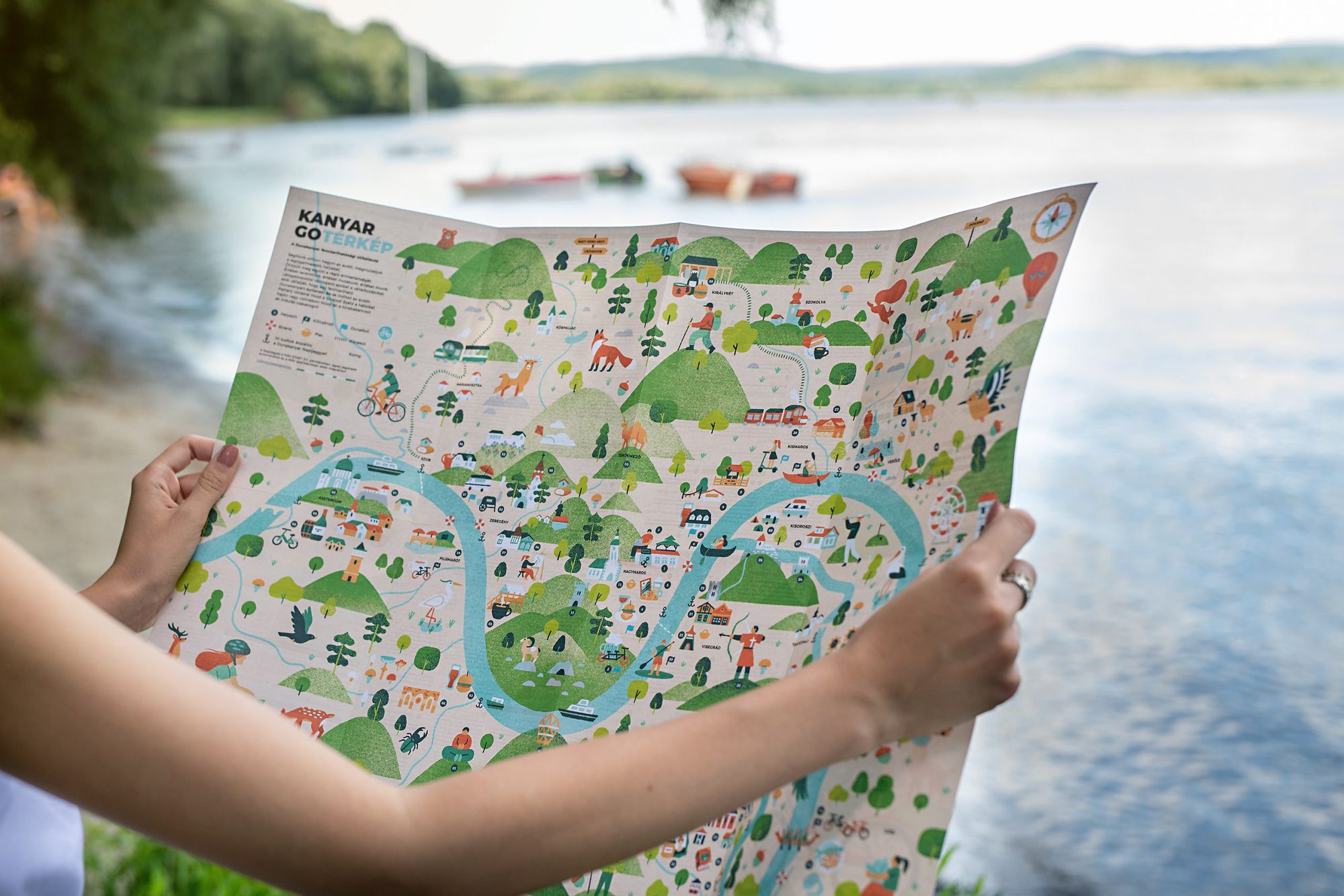
New arrivals and tourists, however, also bring new demands. There is a need for specialty cafés, artisanal bakeries, artisanal burgers, and reimagined Hungarian “lángos”. Cars are winding along the roads. Hiking trails and beaches are crowded with people. The Bend is like Mount Everest on a sunny long weekend. From the base camp of their home (often Budapest in this case), the occasional “climber” clambers out to conquer peaks, lookouts, and restaurants.
Thus, there is a real threat to the people living here that the new community will permanently transform their lives, their daily lives, and the image of their settlement. This is partly true, but to be fair, those who move here are sometimes more local than the locals. Those who leave the city behind no longer want the hustle and bustle and can be even more disturbed by the crowds of tourists. At a social level, therefore, many different perspectives coexist in the Danube Bend. There is work to be done, and that requires dialogue.
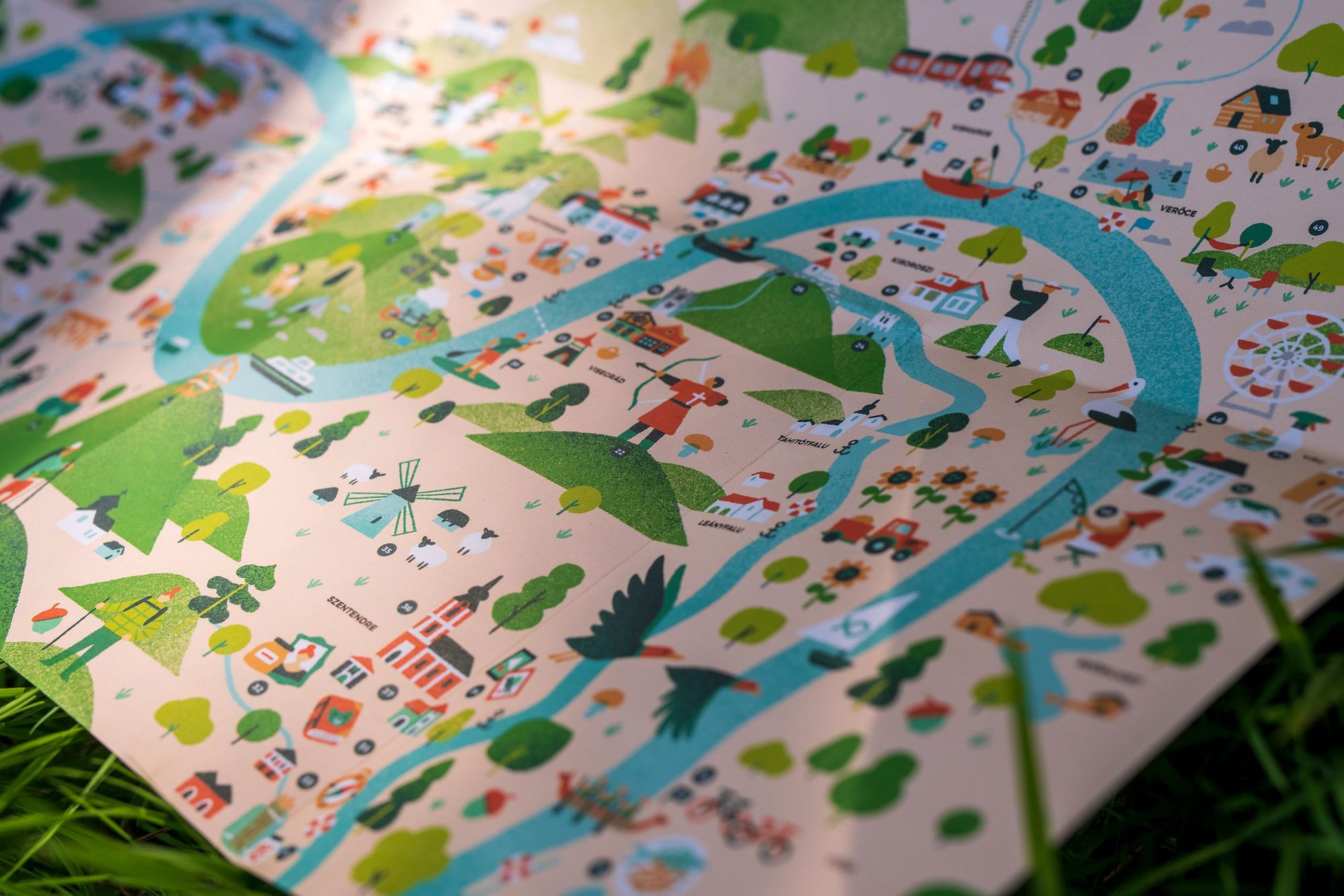
Drops of deeds in one channel
The ”Egymeder” (“one channel”) group was created to gather the little deeds needed to make the right change and to amplify them by channeling them into a single action. The informal association is made up of families, small businesses, organizations, and foundations that have thought big and created a product, a communication platform that supports the region’s sustainability efforts on multiple levels. This is how KanyarGO Map, the Danube Bend Sustainability Guide, was born. A map that shows the way, creates, and protects value. The map is a tool to discover not only the sights to see and the places to eat but also places that commit to doing their utmost to develop the Danube Bend on an acceptable scale while respecting the region. The KanyarGO Map wants to address the people who live here, visit here and move out here on several levels.
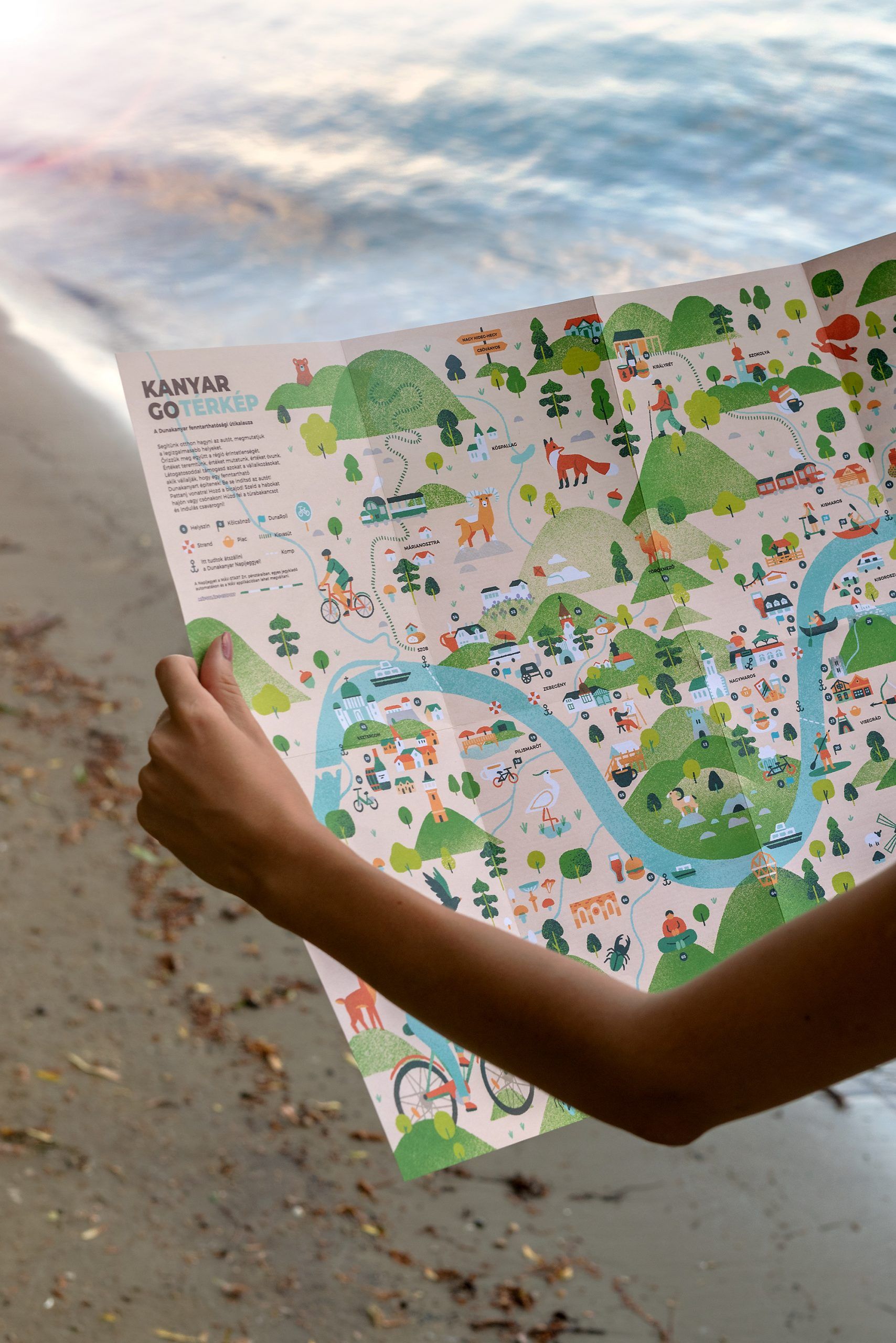
”My family and I have been regular visitors of the Danube Bend for five years. During the first wave of the pandemic, we spent nearly three months in Verőce. It was there, in the valley of the Lósi stream, that the idea of an open-air co-working office was conceived, which eventually materialized in Nagymaros on the upper terrace of the PIKNIK Manufactory, under the name OOOffice. Hence the love and the connection with the businesses with which we created the Egymeder group so that these new-wave places could show their commitment to the region” says Domokos Pálfai, one of the founders of ONION Creative Agency and member of the Egymeder group. ”We have combined two aspects of sustainability in our messages because we want to protect not only the environment but also the people around us from the negative effects of mass tourism” he adds.
”Az bajom van véled, fáj a szívem érted” (”My problem with you is that my heart aches for you”—free translation)
The Egymeder group wants to reassure residents that they are helping new businesses that attract tourists to the area to raise awareness of sustainable transport alternatives. The businesses on the map will make sustainability commitments that are not only about the environment but also about the people around them. By making these self-regulatory commitments, businesses promise a calmer and more sustainable operation as well.
”Living and doing business sustainably is not easy. We don’t do it perfectly, but we don’t strive to do it perfectly either, because it’s not the imperfections that count, it’s the never-ending effort!” Gabriella Halász, owner of Kertünkünk Bar & Lookout, said. ”We simply do what we can: we basically work in the local, natural and seasonal trinity; we don’t produce unnecessary waste, what is generated is collected selectively; we avoid disposable tools and chemicals, but when we need them, we choose organic, biodegradable materials that are the least harmful to our environment! We use everything we can, whether it’s a bunch of mints that’s been turned into homemade syrup or a recycled pallet that we’ve made into furniture with our own hands. Our everyday choices are the key, when we decide whom and what we support. We try to help our guests do the same by promoting cycling, recommending other sustainable places, and being happy to talk about what the so-called “repohár”, that is, the reusable cup system is all about! We believe one just has to start somewhere because every drop counts!” she continued.
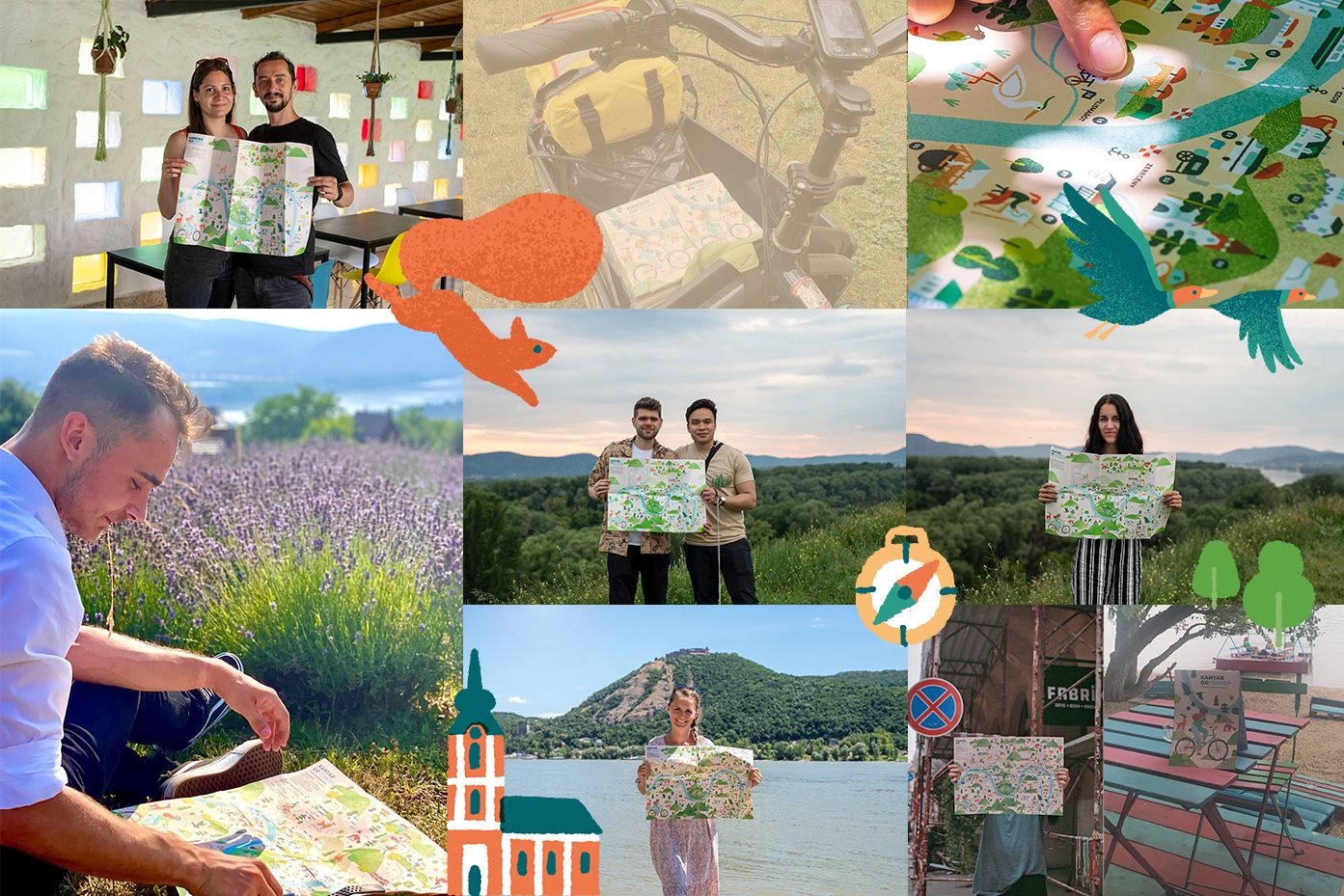
The format of the map (a traditional paper-based edition) is in harmony with the message: it is not an invitation to browse from a distance, but to immerse oneself, to seek paths, to meet people. Laura Sásdi‘s playful illustrations make this complex message light and enjoyable, as the map asks everyone not less than to give up a little of their comfort. Everyone has to pour in a drop of deed to make the pace of progress bearable.
”I have long loved and collected illustrated maps and guidebooks. I’m not sure what it is about them exactly that captivates me, but I’m glad I’ve had the opportunity to try them out a couple of times. I feel that a different kind of approach is needed when drawing a map: there are several small pictures that make up the big whole, while at the same time the information has to be conveyed. I like this kind of challenge” said Laura.
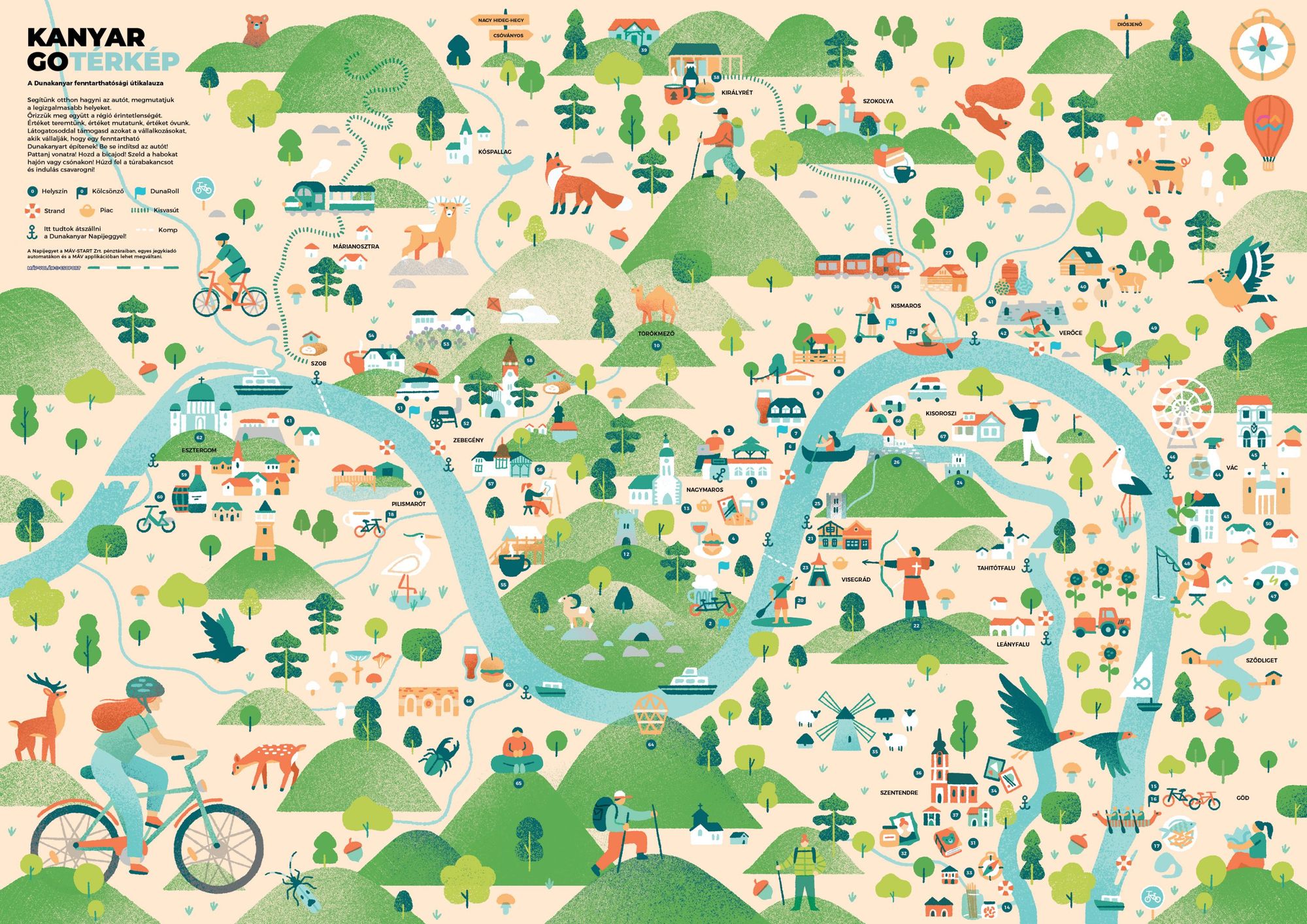
From the very beginning, the URBANUM team has been closely following not only the creation of the map and the activities of the Egymeder group but also the wider problem. The first step has been taken, but we still know very little: in-depth interdisciplinary research and an international perspective will be needed to provide a meaningful answer to the question of how and how much we should shape the life of the region. What kind of relationship is created between Budapest and the settlements of the Danube Bend in the dual flows of commuting and tourism? How can we combine the naturalness of the Danube Bend with the broadening and colorful needs of its inhabitants? Will the Danube, the great connector of Central Europe, also create a connection here?
URBANUM | Web | Facebook | Instagram
KanyarGO | Web | Facebook | Instagram
Egymeder | Web | Facebook | Instagram
You can get the KanyarGO map at the following key locations. You can find the full list here.
Key locations in Budapes: Fabrik Speciality Coffee, Szimpla Kert, TELEP, Központ, Fekete Kutya (The Black Dog Pub), Small Factory, Café Zsivágó, Fellini Római Kultúrbisztró (Fellini Roman Culture Bistro)
Key locations in the Danube Bend: PIKNIK Manufaktúra, OOOffice Coworking, Tandem, BTZ Kayak Canoe Boat Rental, DANU Bar, Kertünk Bar and Lookout, Prímás Cellar, Lujza & Koriander, Magora, Zab és Bab
The founders of the Egymeder group, following the course of the Danube: Szőnyi Tábor (Zebegény), Tandem (Nagymaros), Piknik Manufaktúra (Nagymaros), OOOffice Workation and Co-Working (Nagymaros), Dunakanyarkult association (Verőce), Kertünk Bar and Lookout (Vác), DunakanyarGO tourism portal (Kismaros), URBANUM, an interdisciplinary urban research foundation (Budapest), ONION Creative Agency (Budapest)
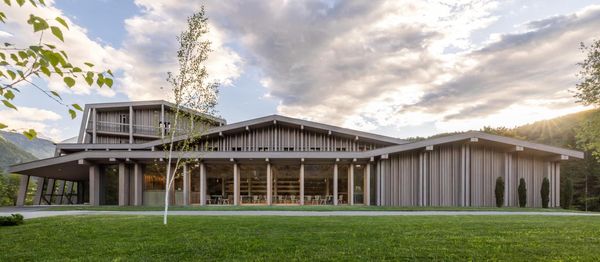
Check out how OFIS Architects made a Slovenian hotel building more sustainable
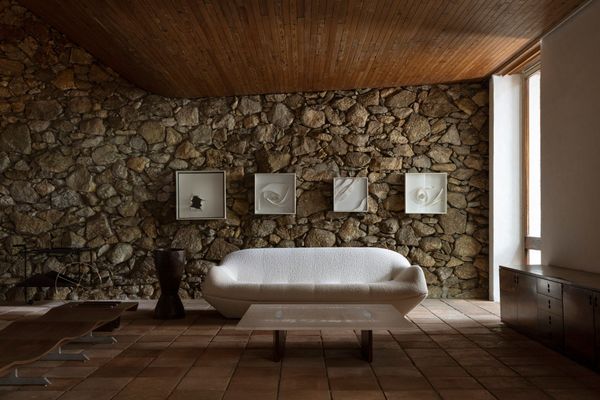
A Polish designer in Brazil: oeuvre exhibition of Jorge Zalszupin










